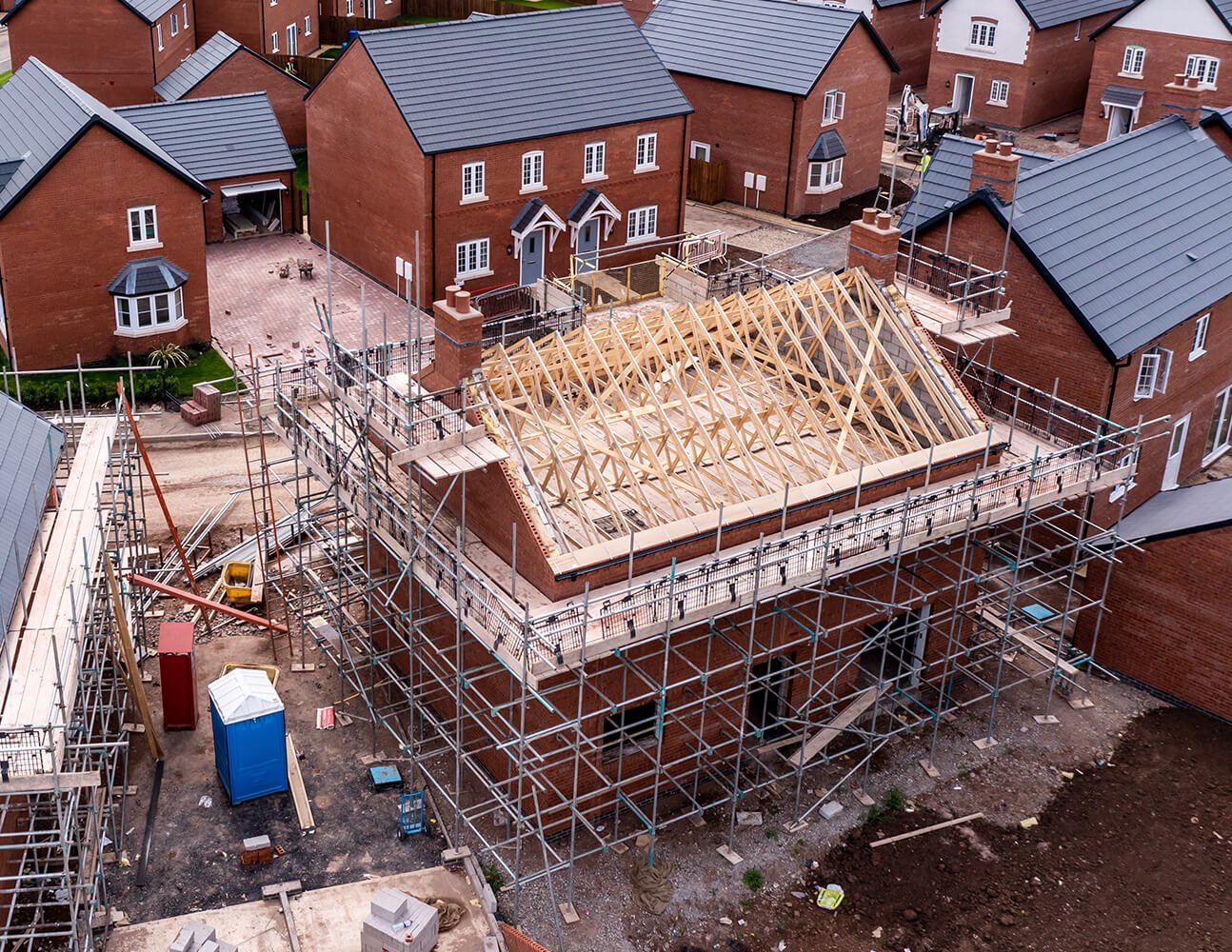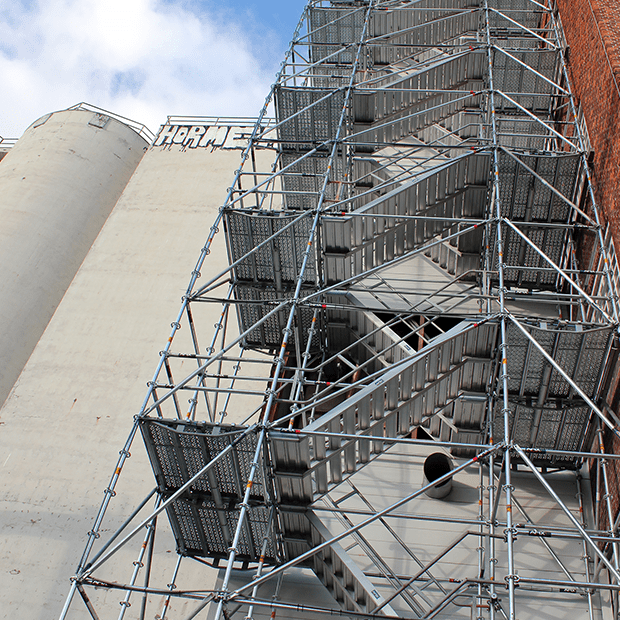Choosing a Local Scaffolding Company for Reliable and Timely Service
Choosing a Local Scaffolding Company for Reliable and Timely Service
Blog Article
A Comprehensive Overview to the Essential Functions of Scaffolding in Modern Construction
The landscape of modern building and construction significantly depends on reliable scaffolding systems that focus on development, effectiveness, and safety. As tasks grow in complexity, understanding the necessary features of scaffolding ends up being essential for guaranteeing worker security and enhancing task timelines. This overview discovers numerous kinds of scaffolding, highlights crucial safety features, and checks out product improvements that add to efficiency and sustainability. The implications of these components expand much past simple construction practices, prompting a closer look at just how they affect total job success and worker well-being.
Sorts Of Scaffolding
Although scaffolding systems can differ commonly in design and application, they normally fall into a number of unique groups that deal with various building and construction demands - Scaffolding. The most typical types consist of supported scaffolding, put on hold scaffolding, and rolling scaffolding
Supported scaffolding is composed of systems supported by a structure of poles, which supply a secure and elevated working surface area. This kind is typically made use of for tasks that require substantial altitude, such as bricklaying or outside painting.
Suspended scaffolding, conversely, is used for tasks calling for accessibility to high altitudes, such as cleansing or repairing building facades. This system hangs from a rooftop or one more structure, permitting employees to reduced or elevate the system as required.
Moving scaffolding attributes wheels that enable simple wheelchair across a task site. It is specifically helpful for tasks that require frequent relocation, such as indoor operate in big rooms.
Each kind of scaffolding is developed with particular applications in mind, making certain that construction tasks can be performed effectively and efficiently. Recognizing these classifications is critical for picking the ideal scaffolding system to meet both project needs and website conditions.
Key Safety And Security Attributes
Safety and security is vital in scaffolding systems, as the prospective threats related to operating at elevations can result in serious crashes otherwise appropriately handled. Key security attributes are necessary to guarantee the well-being of employees and the honesty of the construction website.
Primarily, guardrails are essential. These obstacles offer a physical safeguard versus falls, significantly lowering the danger of major injuries. In addition, toe boards are commonly used to stop tools and products from falling off the scaffold, protecting workers listed below.
One more essential part is the use of non-slip surface areas on platforms. This attribute enhances grip, particularly in adverse weather condition problems, therefore lessening the likelihood of drops and slips. Furthermore, gain access to ladders need to be securely positioned to facilitate secure entry and departure from the scaffold.
Regular examinations and upkeep of scaffolding systems are additionally important. These inspections ensure that all parts are in great condition and operating correctly, addressing any type of wear or damages immediately.
Last but not least, proper training for all workers associated with scaffolding procedures is important to make certain that they understand safety protocols and can determine potential risks. Scaffolding. Collectively, these attributes produce a safer working environment and considerably alleviate threats related to scaffolding
Material Innovations
Innovations in product science have considerably influenced the scaffolding sector, improving both safety and performance in modern construction. The intro of high-strength steel and aluminum alloys has actually reinvented typical scaffolding systems.
Furthermore, innovative composite products, such as fiberglass-reinforced plastics, have actually become practical alternatives. These products are resistant to rust and ecological destruction, therefore extending the life expectancy of scaffolding systems, particularly in extreme weather. Using such materials adds to lower maintenance expenses and ensures regular performance in time.


Design Factors To Consider
Thinking about the complexities of modern-day building and construction projects, efficient scaffolding design is vital to guaranteeing both capability and safety. Style factors to consider should incorporate different variables, including tons ability, elevation, and the particular needs of the construction website. Each task presents one-of-a-kind difficulties, demanding a flexible technique to scaffolding systems that can adjust to varying problems.
Structural integrity is important; for that reason, engineers should compute the loads that the scaffolding will support, including employees, materials, and devices. The selection of products plays an important function in making certain the scaffolding can endure these lots while continuing to be resilient and light-weight. Furthermore, the style needs to enable very easy accessibility and egress, assisting in the smooth motion of workers and materials.
Security functions, such as guardrails and non-slip surfaces, must be integrated to decrease risks of accidents. The format needs to think about the surrounding environment, consisting of scaffolder day rate surrounding frameworks and prospective hazards. By dealing with these style considerations, building companies can improve the effectiveness of scaffolding systems and advertise a much safer working atmosphere, ultimately contributing to the overall success of the task.
Maintenance and Evaluations
The effectiveness of scaffolding systems prolongs beyond initial layout and application; ongoing maintenance and regular examinations are crucial to ensuring their proceeded efficiency and safety and security throughout the period of a job. Regular assessments ought to be performed by qualified employees to identify any kind of indications of wear, damages, or instability that might jeopardize the stability of the additional info scaffolding.
Upkeep methods ought to consist of regular checks of structural parts, such as installations, slabs, and frameworks, ensuring that all components stay complimentary and safe from deterioration or other damage. Additionally, the functionality of security features, such as guardrails and toe boards, must be assessed to make sure compliance with security guidelines.
Documents of all evaluations and maintenance tasks is important for liability and governing compliance. A systematic method to record-keeping not just help in tracking the problem of the scaffolding but also offers needed proof in the occasion of an incident.
Ultimately, establishing an extensive maintenance and assessment timetable will significantly reduce the risk of crashes and enhance the general safety and security of the construction site. By prioritizing these techniques, construction managers can guard workers and maintain the task's stability.

Final Thought
In final thought, the important attributes of scaffolding in contemporary construction include a range of important elements, consisting of diverse kinds, key safety and security devices, product advancements, and thoughtful design factors to consider. Stressing safety and security via guardrails and non-slip surface areas, alongside innovations in materials like high-strength steel, improves both performance and sustainability. Moreover, regular maintenance and examinations are important for ensuring architectural stability and safety and security on construction websites, inevitably facilitating effective try this site project execution and advertising the health of workers.
The landscape of modern-day building and construction increasingly depends on efficient scaffolding systems that focus on technology, safety and security, and performance.Developments in material science have actually dramatically affected the scaffolding sector, improving both security and effectiveness in contemporary building and construction. Generally, these product developments not only enhance the efficiency and safety and security of scaffolding systems however likewise align with the sector's press towards sustainability, as numerous contemporary materials are made to be extra ecologically friendly.
Considering the intricacies of contemporary construction tasks, reliable scaffolding style is paramount to ensuring both capability and security.In conclusion, the essential attributes of scaffolding in contemporary building encompass a variety of vital elements, consisting of diverse types, key safety and security mechanisms, product developments, and thoughtful layout factors to consider.
Report this page